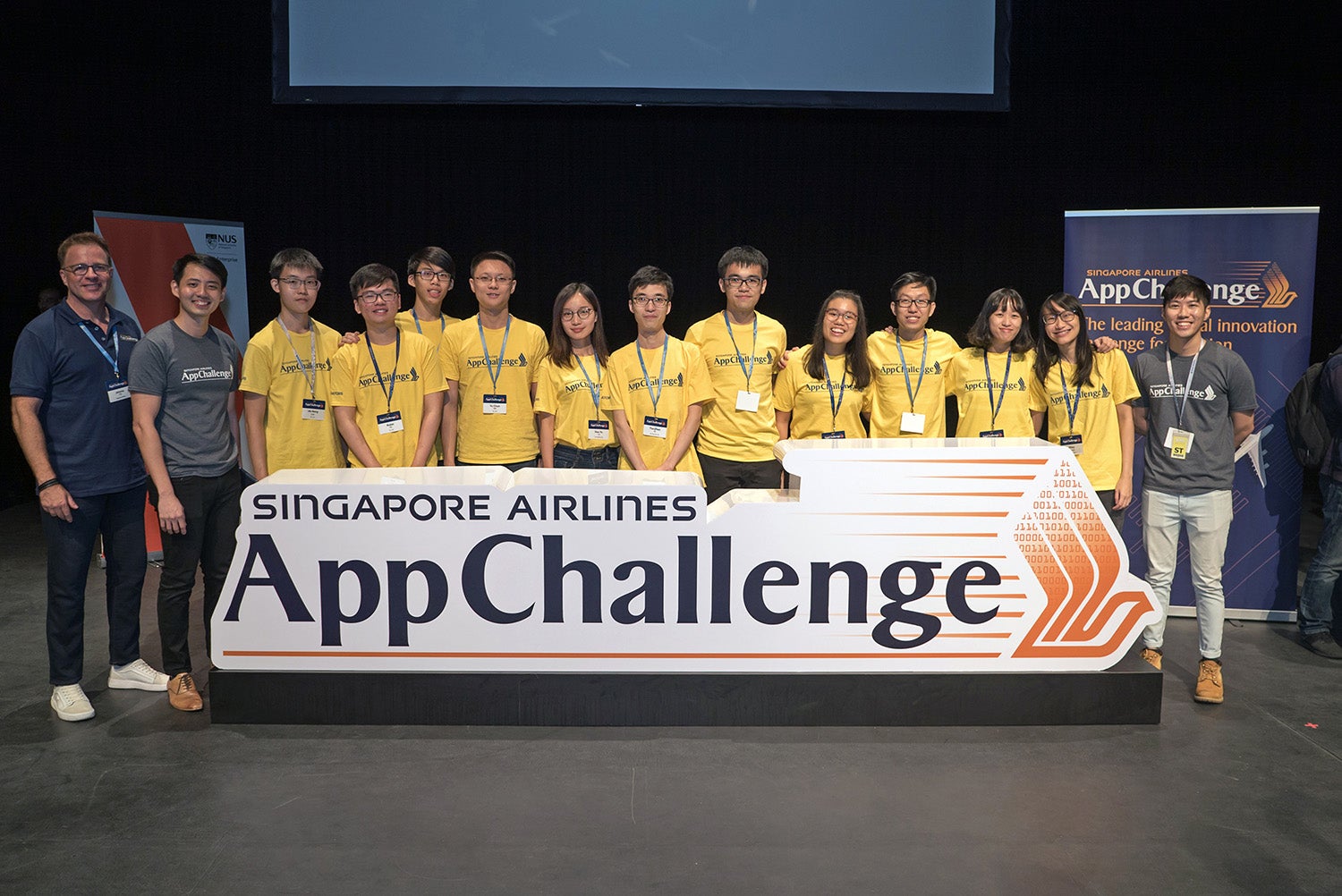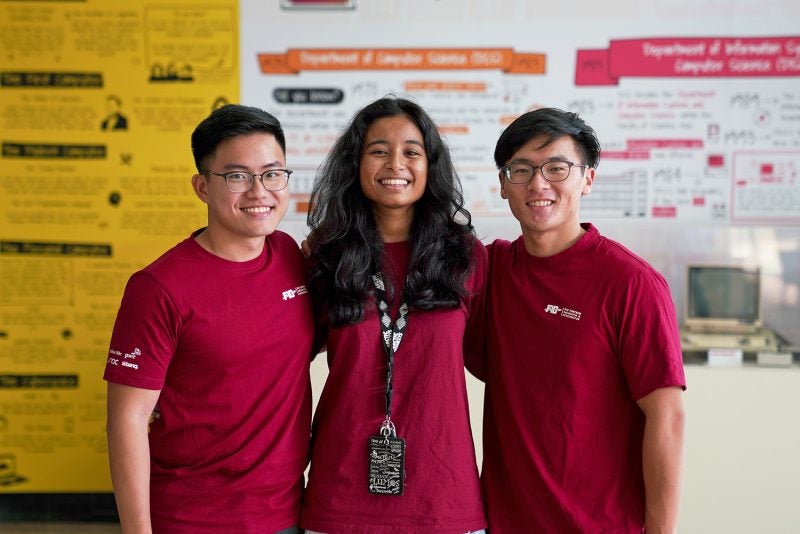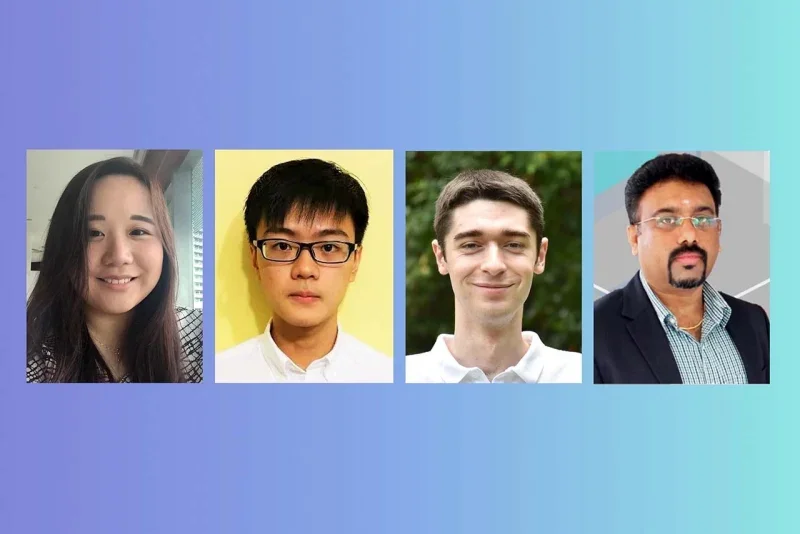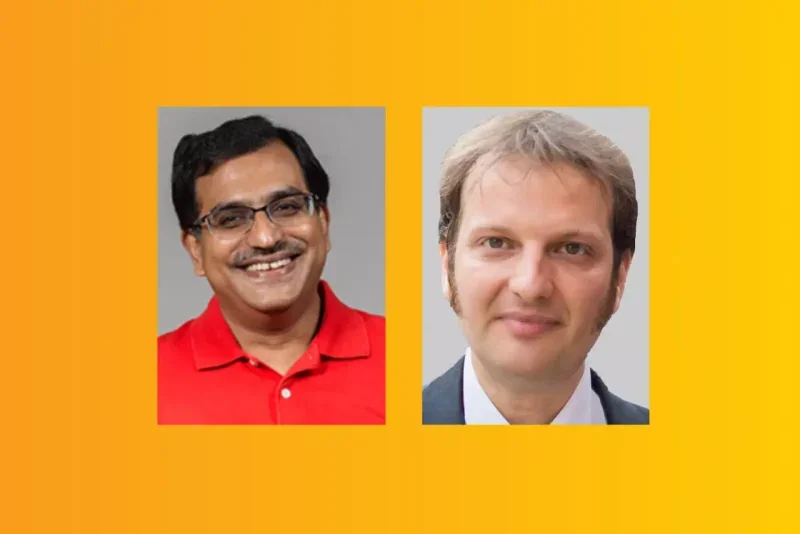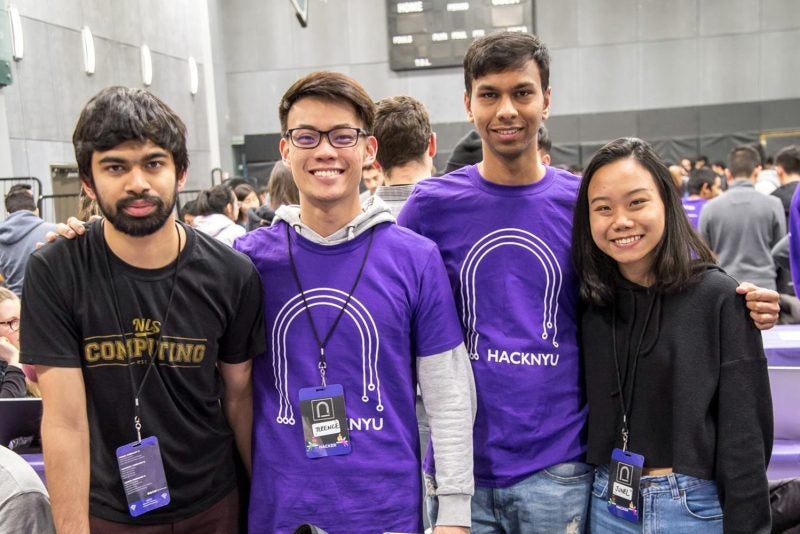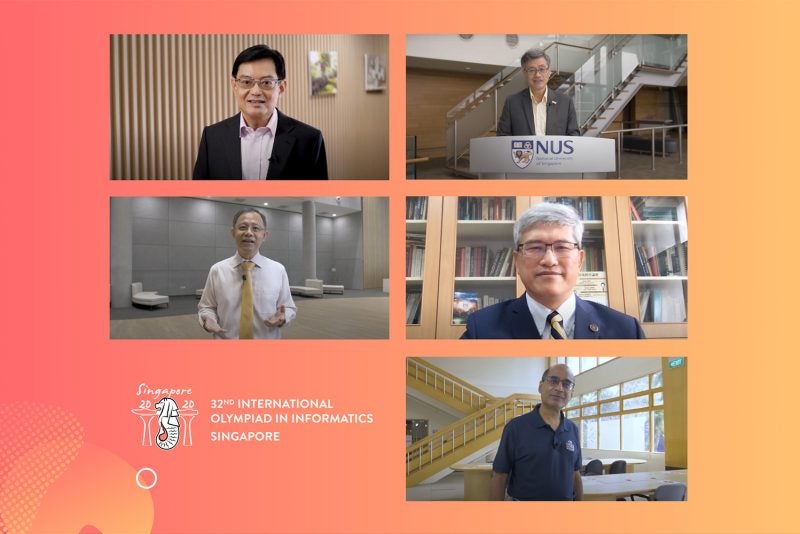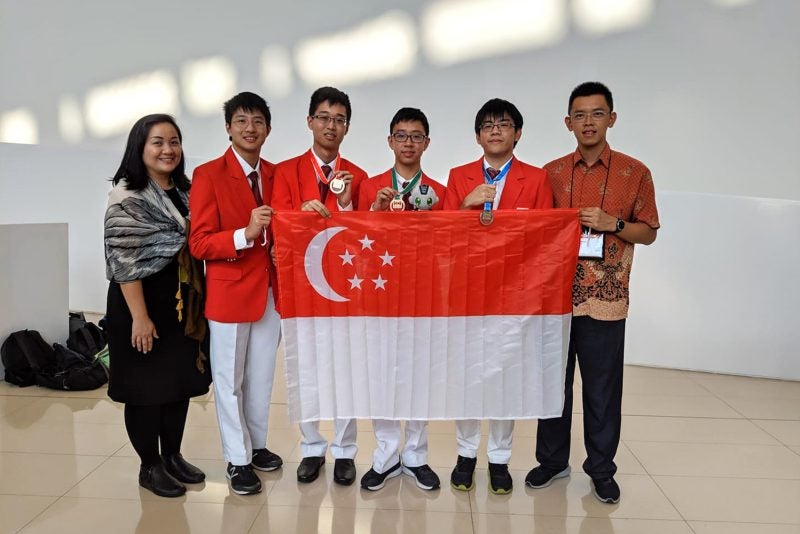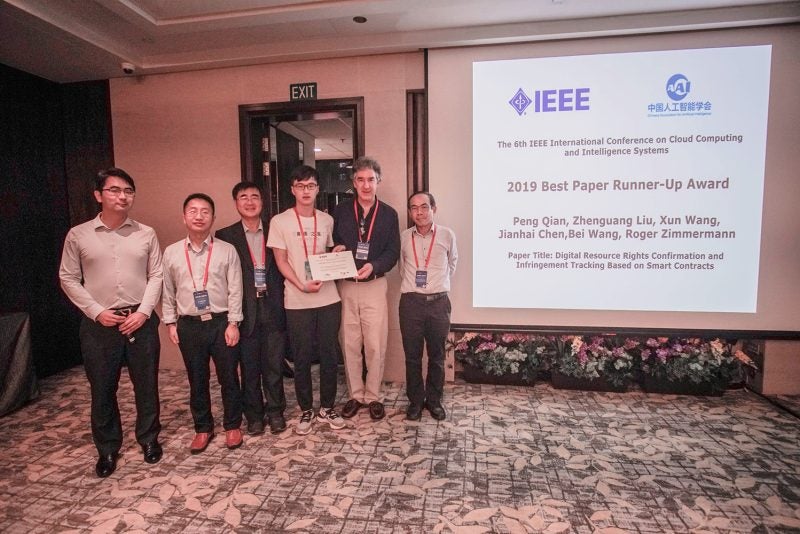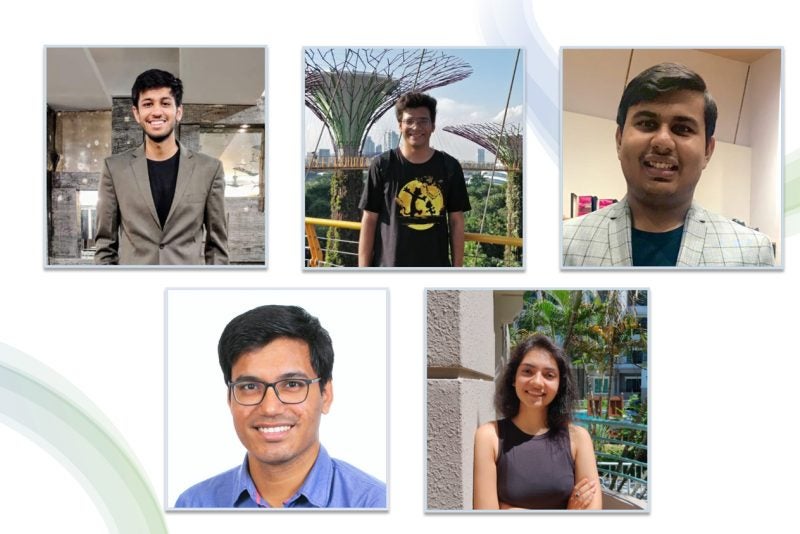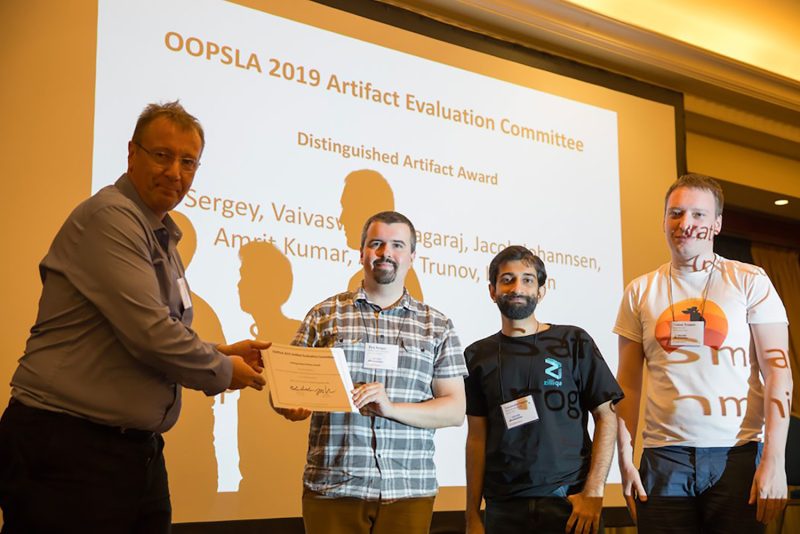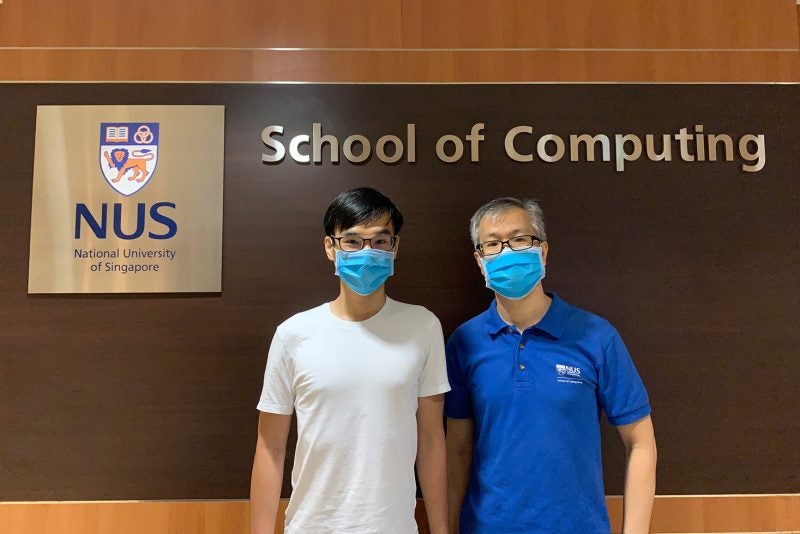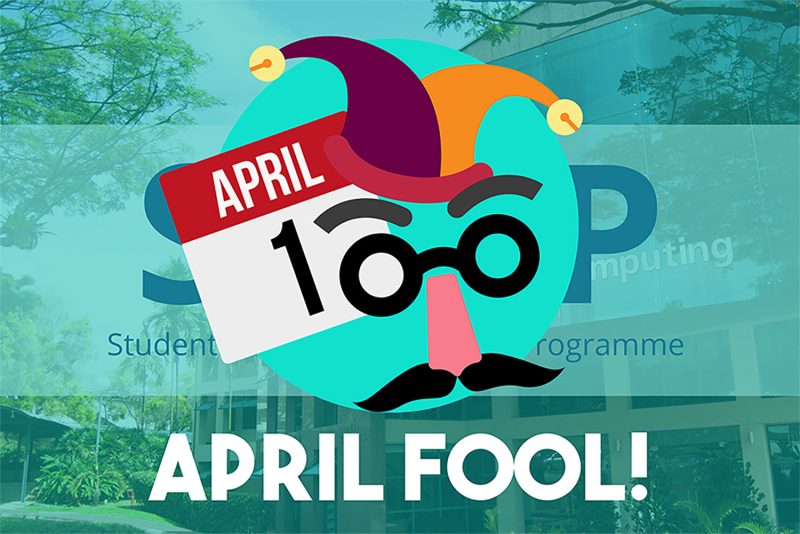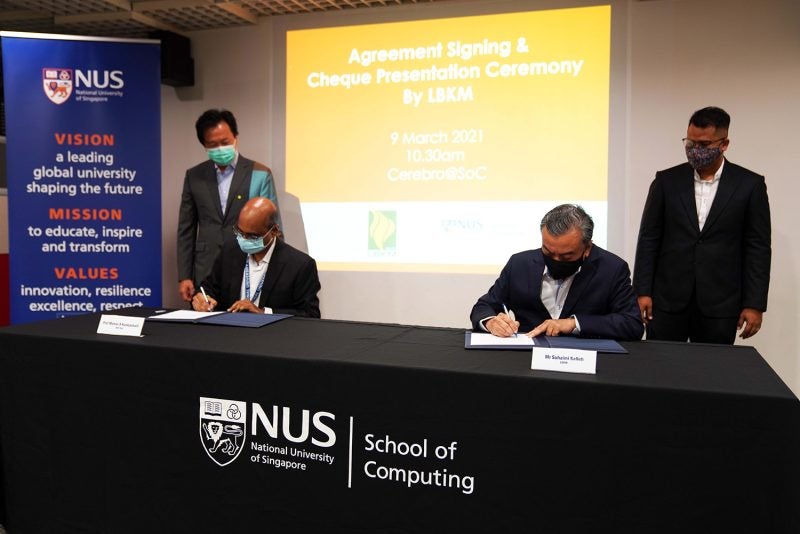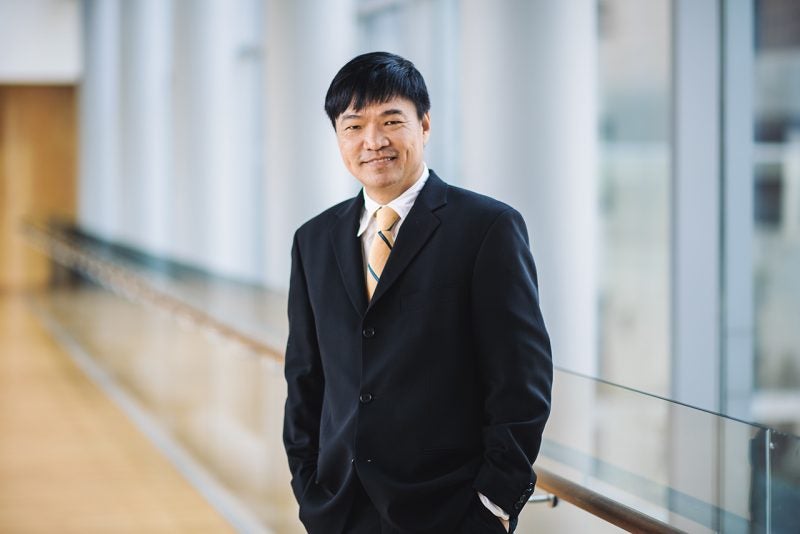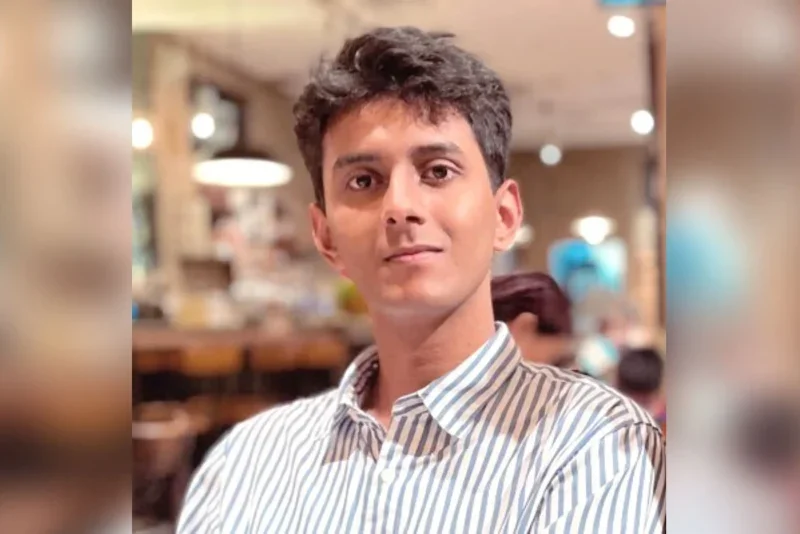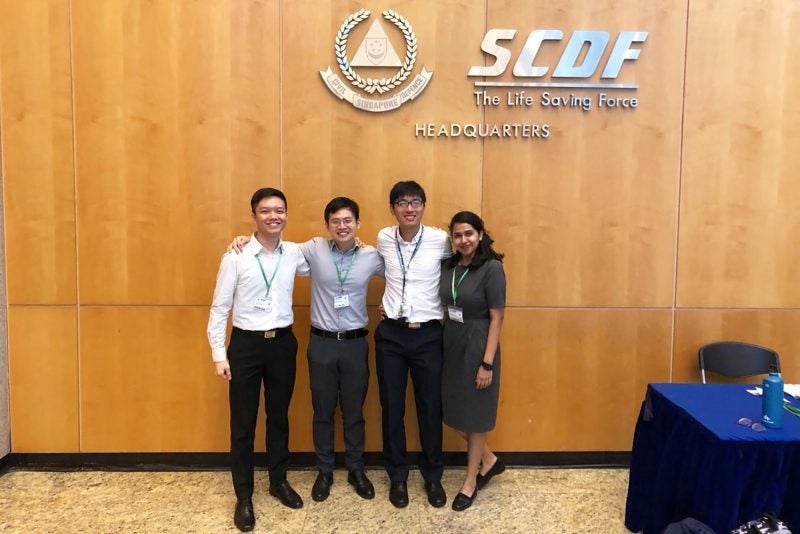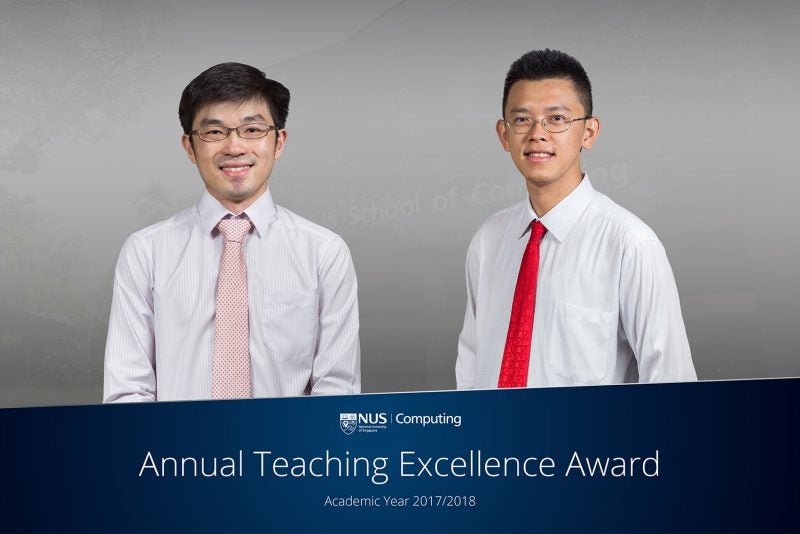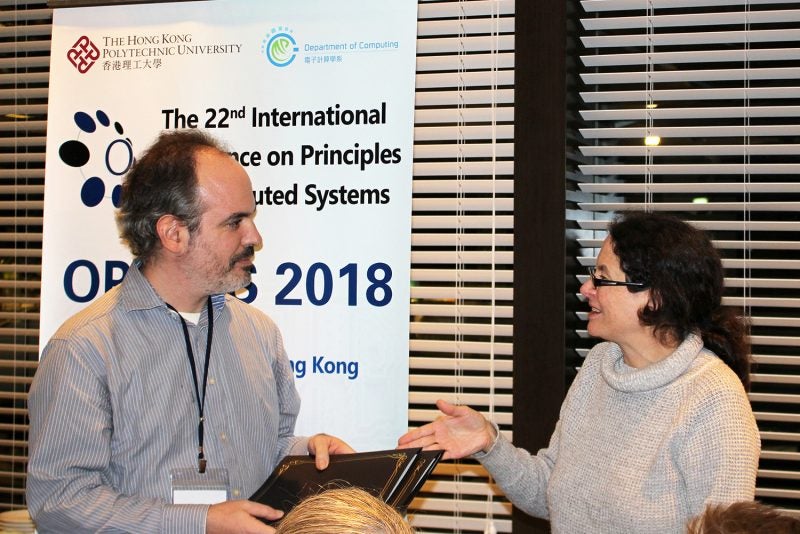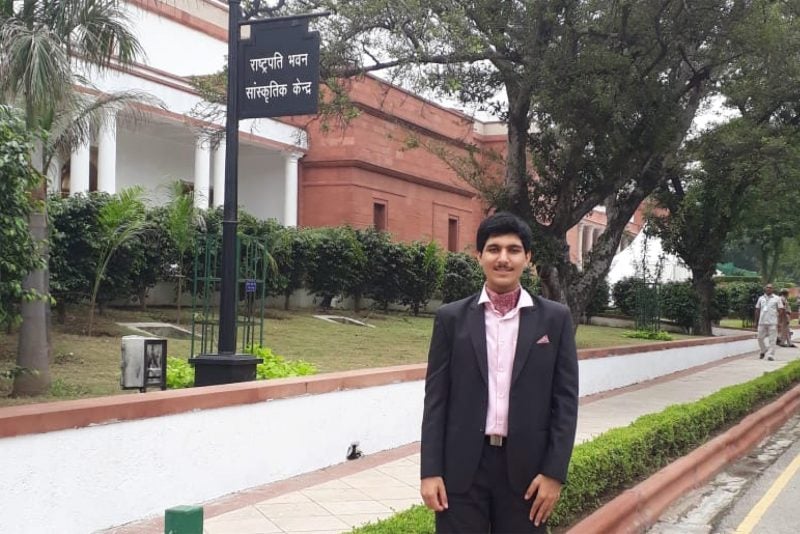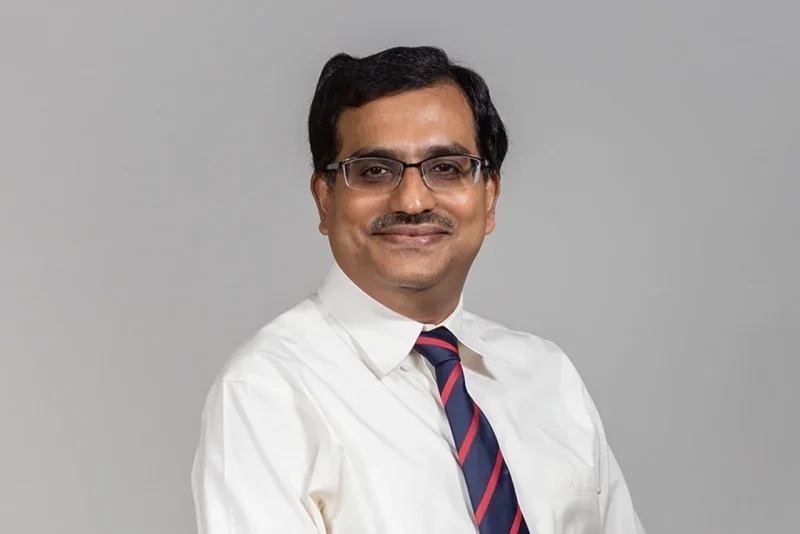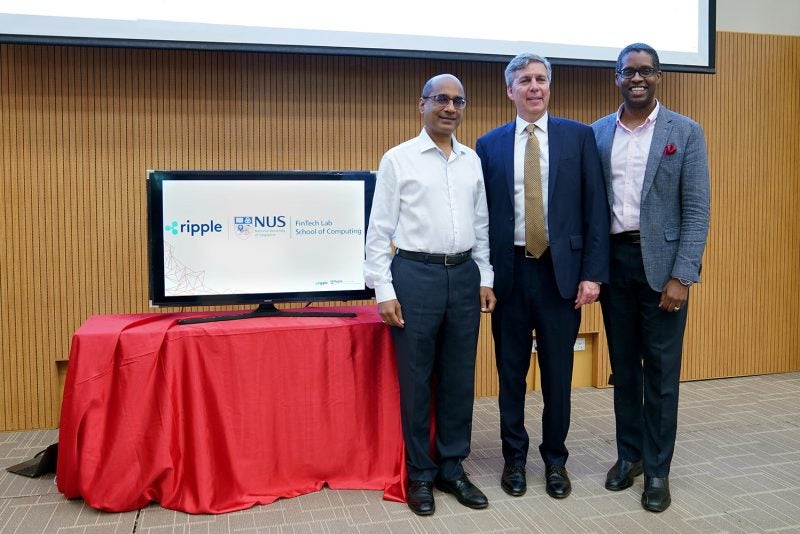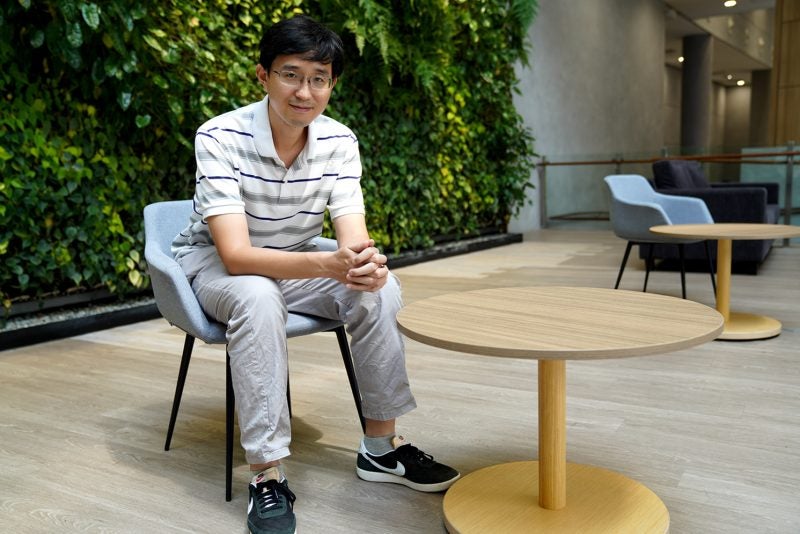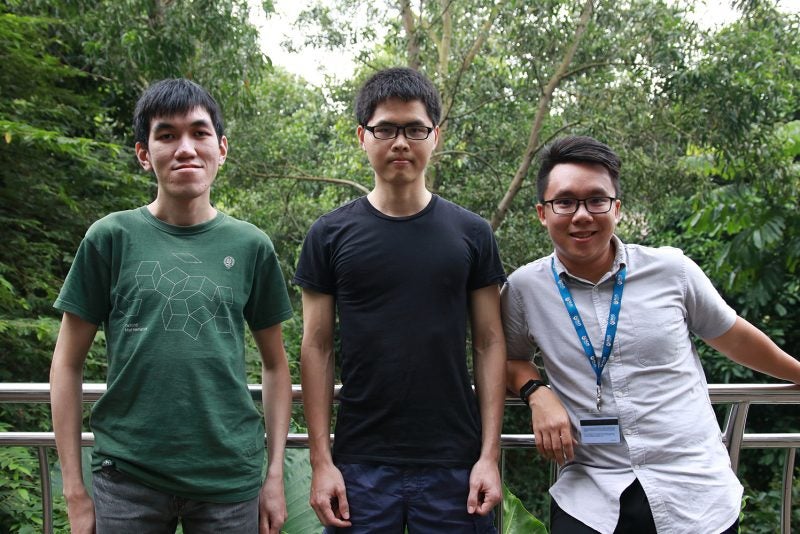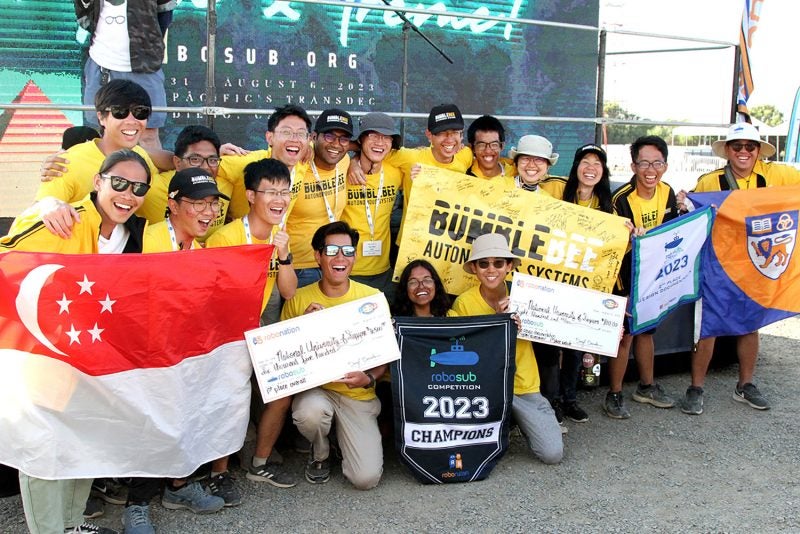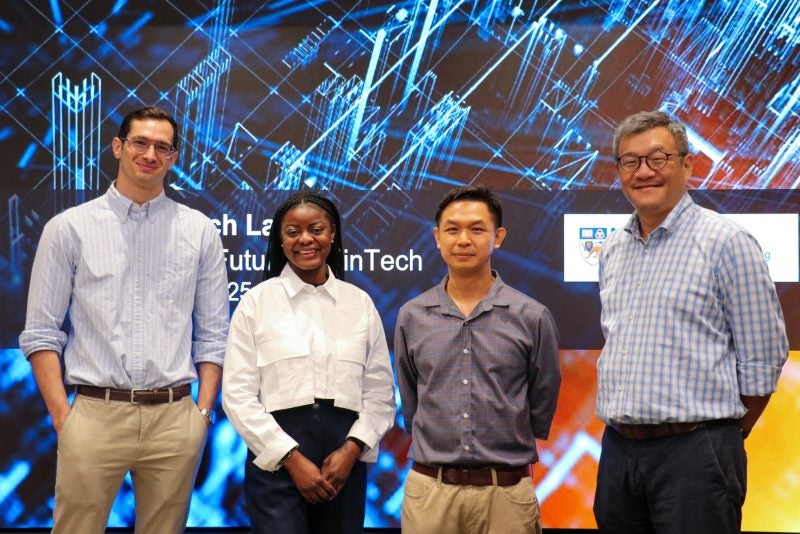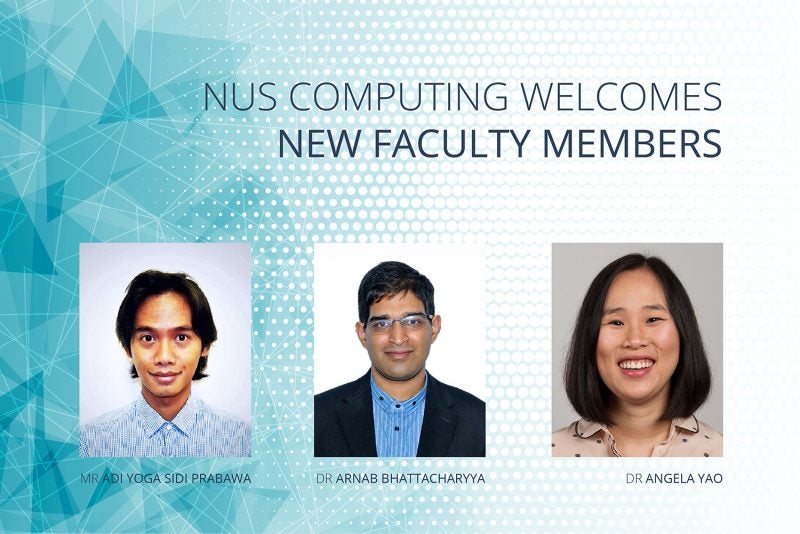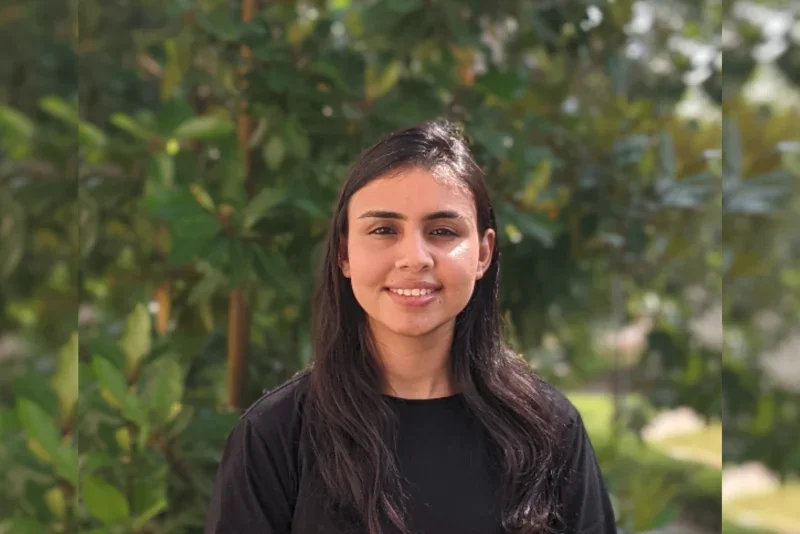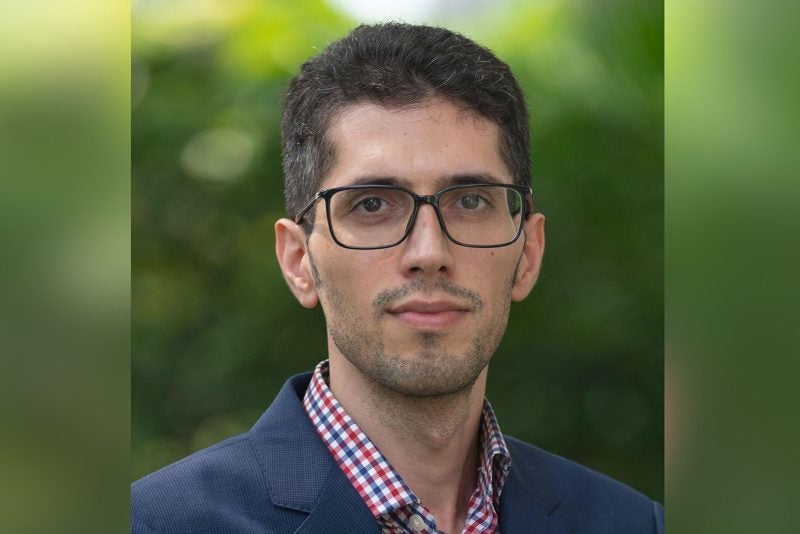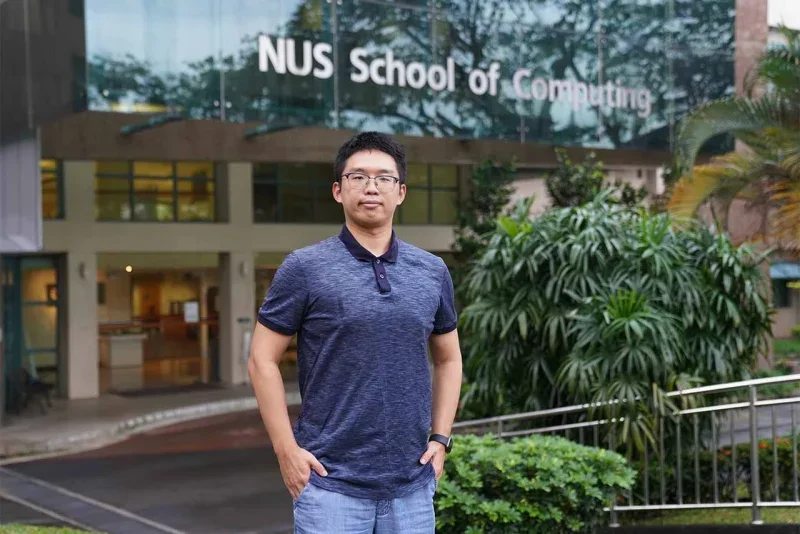18 November 2019 – NUS Computing students clinched the top three student category prizes at the recent Singapore Airlines (SIA) AppChallenge 2019 competition held from June to October this year. The final round of presentations and award ceremony was held at the School of the Arts on 18 October.
Winners of the student category, comprising of second year NUS Computing students Ni Tianzhen (Computer Science), Yan Zhiwen (Computer Engineering), and Liu Xiaoyu (Computer Science), won an all-expense paid trip to Silicon Valley. The team also won the chance to participate in the SIA Accelerator programme to develop their winning solution into a viable business model with funding of up to S$150,000.
First year Computer Science students Robin Ho, Yeh Yu Chun, and Daniel Lau won 50,000 KrisFlyer Miles per team member for winning the first runners up prize while third place winner Cheok Jia Ying (Information Systems, Year 4) and her teammates won 30,000 KrisFlyer Miles each for placing third in the competition.
Over 500 teams from across 70 countries competed in this year’s edition of the SIA AppChallenge competition. This is the fifth year SIA and NUS Enterprise organised the global digital innovation challenge. Teams from either the Startup & Innovators or the Singapore Students categories were tasked to formulate and develop innovative digital solutions to solve one of six challenge statements presented by the nation’s flag carrier airline. Some of the challenges include improving SIA’s customer experience, leveraging on data to improve sustainability, and helping engineers increase their productivity in aircraft maintenance.
Over the course of the competition, Tianzhen, Zhiwen, and Xiaoyu, developed an in-flight companion app for SIA passengers to order food, call for cabin crew, enjoy entertainment on SIA’s entertainment system KrisWorld, as well as to shop to SIA’s merchandise store KrisShop. The team won the top prize for their innovative solution that was easy to implement and deploy.
One of the key features of the team’s app is that passengers can easily access the app. There is no need for passengers to install a mobile app, create an account, or even have Internet access to use the application. “We also designed our app to collect use history for big data analysis without revealing the personal information of passengers. This can be very helpful in providing personalised services and help SIA make informed business decisions in the future,” said Zhiwen, on behalf of his team.
Second place winners Daniel, Robin and Yu Chun, with Republic Polytechnic student Lew Jie Neng, selected the challenge of creating an effortless and customised ground experience for passengers and developed an integrated baggage tracking system. The team proposed using CCTV cameras and object detection technology to identify and gauge the location of passengers’ bags.
“Passengers will be notified when their bags have not arrived at their intended location and will be kept informed about the location of their bags. We hope to minimise any surprises or inconveniences passengers face when they wait at the baggage carousel only to discover that their bags did not follow them,” said Yu Chun, on behalf of his team. “We hope to create a smooth and stress-free experience and to help alleviate a common problem frequent flyers can relate to.”
Instead of choosing to tackle a passenger-related challenge statement, Jia Ying and her teammates (NUS students Petrina Yeow, Tan Long Bin, and Vivian Ngiam) decided to create a solution to help SIA technicians and engineers better maintain the company’s fleet of aircrafts. Jia Ying and her team used optical character recognition and computer vision to create a cloud-based aircraft maintenance platform. “Our platform includes a digital technical manual that has a step-by-step task list with references. It also includes an aircraft parts ordering process that uses computer vision to detect which fine parts are required,” explained Jia Ying.

